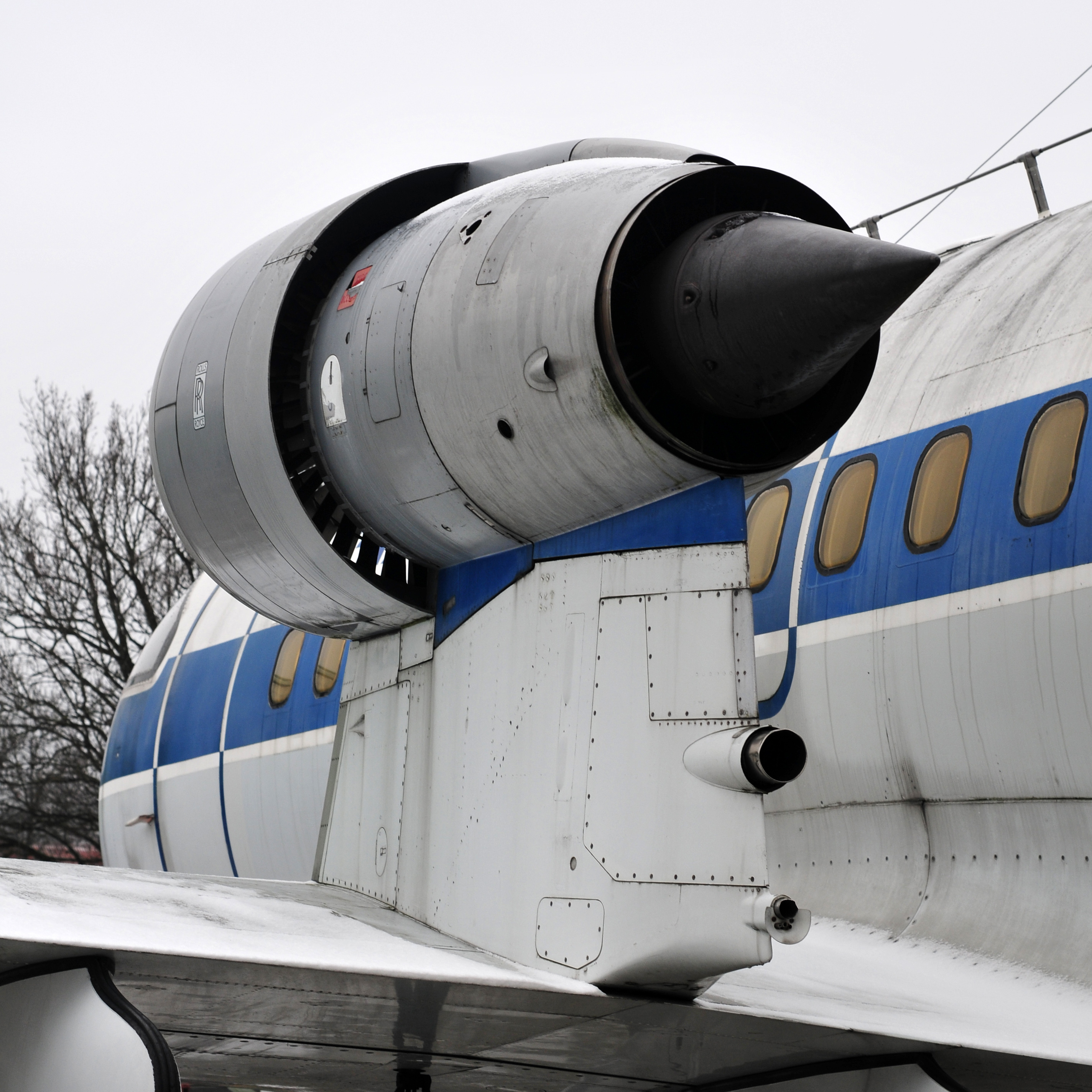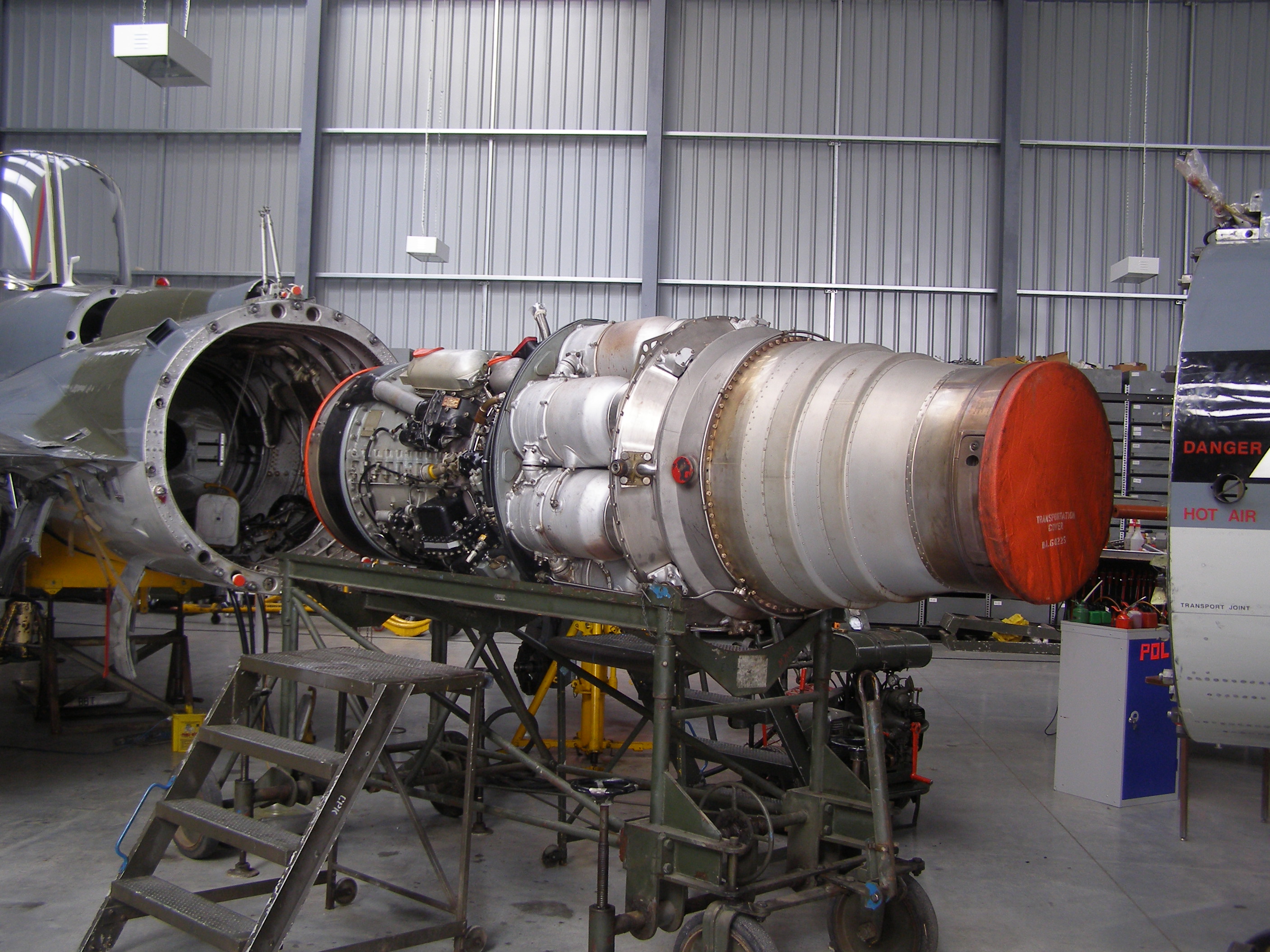|
Zero-stage
Jet engines and other gas turbine engines are often uprated by adding a zero-stage, sometimes written '0' stage, to the front of a compressor.Hooker, Sir Stanley (1984). ''Not much of an Engineer'', P. 153. Airlife Publishing Ltd, Shrewsbury, England . At a given core size, adding a stage to the front of the compressor not only increases the cycle overall pressure ratio, but increases the core mass flow. A further uprating may be done by adding another stage in front of the previously-added zero stage, in which case the new one may be known as a zero-zero stage. A comparison with other ways of uprating an existing engine without drastically redesigning the engine shows for a particular case, e.g. the Rolls-Royce/SNECMA M45H, the thrust could have been increased by 25% with a zero-staged l-p compressor or 10% with either an improved HP turbine or with water injection. Zero-staging is also combined with other modifications to provide increased thrust or lower turbine temperature."" ... [...More Info...] [...Related Items...] OR: [Wikipedia] [Google] [Baidu] |
Rolls-Royce/SNECMA M45H
The Rolls-Royce/SNECMA M45H is an Anglo-French medium bypass ratio turbofan produced specifically for the twin-engined VFW-Fokker 614 aircraft in the early 1970s. The design was started as a collaborative effort between Bristol Siddeley and SNECMA. Design and development The VFW 614 was designed to operate over short sectors with up to a dozen flights a day. The engines were optimized for 30-minute sectors at a cruise altitude of 21,000 feet at Mach 0.65. Only a few minutes would be spent at the cruise rating and most of the flight would be at the higher climb rating or at a descent setting. The engine had a low turbine entry temperature and comparatively low rotational speed. The engine was designed to be uprated without drastic redesign. Three options were water injection (+10% thrust), improved HP turbine (+10% thrust), addition of a zero-stage to the LP compressor (+25% thrust). The M45H-01 was to have a thrust-specific fuel consumption (TSFC) of . The engine was devel ... [...More Info...] [...Related Items...] OR: [Wikipedia] [Google] [Baidu] |
Jet Engine
A jet engine is a type of reaction engine discharging a fast-moving jet of heated gas (usually air) that generates thrust by jet propulsion. While this broad definition can include rocket, Pump-jet, water jet, and hybrid propulsion, the term typically refers to an internal combustion airbreathing jet engine such as a turbojet, turbofan, ramjet, or pulse jet engine, pulse jet. In general, jet engines are internal combustion engines. Airbreathing jet engines typically feature a Axial compressor, rotating air compressor powered by a turbine, with the leftover power providing thrust through the propelling nozzle—this process is known as the Brayton cycle, Brayton thermodynamic cycle. Jet aircraft use such engines for long-distance travel. Early jet aircraft used turbojet engines that were relatively inefficient for subsonic flight. Most modern subsonic jet aircraft use more complex High-bypass turbofan, high-bypass turbofan engines. They give higher speed and greater fuel eff ... [...More Info...] [...Related Items...] OR: [Wikipedia] [Google] [Baidu] |
Gas Turbine
A gas turbine, also called a combustion turbine, is a type of continuous flow internal combustion engine. The main parts common to all gas turbine engines form the power-producing part (known as the gas generator or core) and are, in the direction of flow: * a rotating gas compressor * a combustor * a compressor-driving turbine. Additional components have to be added to the gas generator to suit its application. Common to all is an air inlet but with different configurations to suit the requirements of marine use, land use or flight at speeds varying from stationary to supersonic. A propelling nozzle is added to produce thrust for flight. An extra turbine is added to drive a propeller (turboprop) or ducted fan (turbofan) to reduce fuel consumption (by increasing propulsive efficiency) at subsonic flight speeds. An extra turbine is also required to drive a helicopter rotor or land-vehicle transmission (turboshaft), marine propeller or electrical generator (power turbine). Greater ... [...More Info...] [...Related Items...] OR: [Wikipedia] [Google] [Baidu] |
Gas Compressor
A compressor is a mechanical device that increases the pressure of a gas by reducing its volume. An air compressor is a specific type of gas compressor. Compressors are similar to pumps: both increase the pressure on a fluid and both can transport the fluid through a pipe. The main distinction is that the focus of a compressor is to change the density or volume of the fluid, which is mostly only achievable on gases. Gases are compressible, while liquids are relatively incompressible, so compressors are rarely used for liquids. The main action of a pump is to pressurize and transport liquids. Many compressors can be staged, that is, the fluid is compressed several times in steps or stages, to increase discharge pressure. Often, the second stage is physically smaller than the primary stage, to accommodate the already compressed gas without reducing its pressure. Each stage further compresses the gas and increases its pressure and also temperature (if inter cooling between stages i ... [...More Info...] [...Related Items...] OR: [Wikipedia] [Google] [Baidu] |
Overall Pressure Ratio
In aeronautical engineering, overall pressure ratio, or overall compression ratio, is the ratio of the stagnation pressure as measured at the front and rear of the compressor of a gas turbine engine. The terms ''compression ratio'' and ''pressure ratio'' are used interchangeably. Overall compression ratio also means the ''overall cycle pressure ratio'' which includes intake ram. History of overall pressure ratios Early jet engines had limited pressure ratios due to construction inaccuracies of the compressors and various material limits. For instance, the Junkers Jumo 004 from World War II had an overall pressure ratio 3.14:1. The immediate post-war Snecma Atar improved this marginally to 5.2:1. Improvements in materials, compressor blades, and especially the introduction of multi-spool engines with several different rotational speeds, led to the much higher pressure ratios common today. Modern civilian engines generally operate between 40 and 55:1. The highest in-service is th ... [...More Info...] [...Related Items...] OR: [Wikipedia] [Google] [Baidu] |
Rolls-Royce Avon
The Rolls-Royce Avon was the first axial flow jet engine designed and produced by Rolls-Royce. Introduced in 1950, the engine went on to become one of their most successful post-World War II engine designs. It was used in a wide variety of aircraft, both military and civilian, as well as versions for stationary and maritime power. An English Electric Canberra powered by two Avons made the first un-refuelled non-stop transatlantic flight by a jet, and a BOAC de Havilland Comet 4 powered by four Avons made the first scheduled transatlantic crossing by a jet airliner. Production of the Avon aero engine version ended after 24 years in 1974.Gunston 1989, p. 149. Production of the Avon-derived industrial version, currently produced by Siemens, continues to this day. The current version of the Avon, the Avon 200, is an industrial gas generator that is rated at . As of 2011, 1,200 Industrial Avons have been sold, and the type has established a 60,000,000 hour record for its class. ... [...More Info...] [...Related Items...] OR: [Wikipedia] [Google] [Baidu] |
Rolls-Royce/Snecma Olympus 593
The Rolls-Royce/Snecma Olympus 593 was an Anglo-French turbojet with reheat (afterburners), which powered the supersonic airliner Concorde. It was initially a joint project between Bristol Siddeley Engines Limited (BSEL) and Snecma, derived from the Bristol Siddeley Olympus 22R engine."Olympus-the first forty years" Alan Baxter, RRHT No15, , p. 135. Rolls-Royce Limited acquired BSEL in 1966 during development of the engine, making BSEL the Bristol Engine Division of Rolls-Royce. Until regular commercial flights by Concorde ceased, in October 2003, the Olympus turbojet was unique in aviation as the only turbojet with reheat powering a commercial aircraft. The overall thermal efficiency of the engine in supersonic cruising flight (supercruise) was about 43%, which at the time was the highest figure recorded for any normal thermodynamic machine."Not Much of an Engineer" Sir Stanley Hooker An Autobiography, , p. 154. Development The initial design of the engine was a ... [...More Info...] [...Related Items...] OR: [Wikipedia] [Google] [Baidu] |
Turbine
A turbine ( or ) (from the Greek , ''tyrbē'', or Latin ''turbo'', meaning vortex) is a rotary mechanical device that extracts energy from a fluid flow and converts it into useful work. The work produced by a turbine can be used for generating electrical power when combined with a generator.Munson, Bruce Roy, T. H. Okiishi, and Wade W. Huebsch. "Turbomachines." Fundamentals of Fluid Mechanics. 6th ed. Hoboken, NJ: J. Wiley & Sons, 2009. Print. A turbine is a turbomachine with at least one moving part called a rotor assembly, which is a shaft or drum with blades attached. Moving fluid acts on the blades so that they move and impart rotational energy to the rotor. Early turbine examples are windmills and waterwheels. Gas, steam, and water turbines have a casing around the blades that contains and controls the working fluid. Credit for invention of the steam turbine is given both to Anglo-Irish engineer Sir Charles Parsons (1854–1931) for invention of the reaction turbine, and to ... [...More Info...] [...Related Items...] OR: [Wikipedia] [Google] [Baidu] |



_last_flight.jpg)
